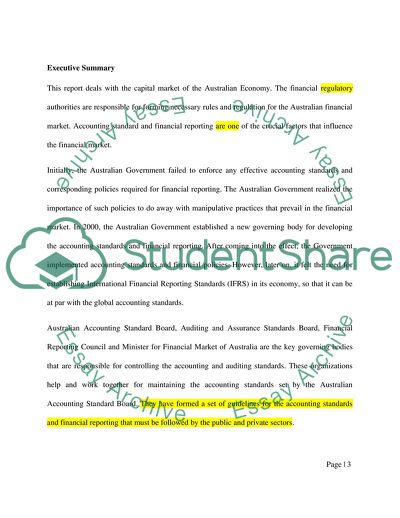Cite this document
(Australian Capital Markets Regulatory Systems Report, n.d.)
Australian Capital Markets Regulatory Systems Report. https://studentshare.org/finance-accounting/1741503-advanced-financial-accounting-theory-australian-capital-markets-regulatory-systems
Australian Capital Markets Regulatory Systems Report. https://studentshare.org/finance-accounting/1741503-advanced-financial-accounting-theory-australian-capital-markets-regulatory-systems
(Australian Capital Markets Regulatory Systems Report)
Australian Capital Markets Regulatory Systems Report. https://studentshare.org/finance-accounting/1741503-advanced-financial-accounting-theory-australian-capital-markets-regulatory-systems.
Australian Capital Markets Regulatory Systems Report. https://studentshare.org/finance-accounting/1741503-advanced-financial-accounting-theory-australian-capital-markets-regulatory-systems.
“Australian Capital Markets Regulatory Systems Report”. https://studentshare.org/finance-accounting/1741503-advanced-financial-accounting-theory-australian-capital-markets-regulatory-systems.


